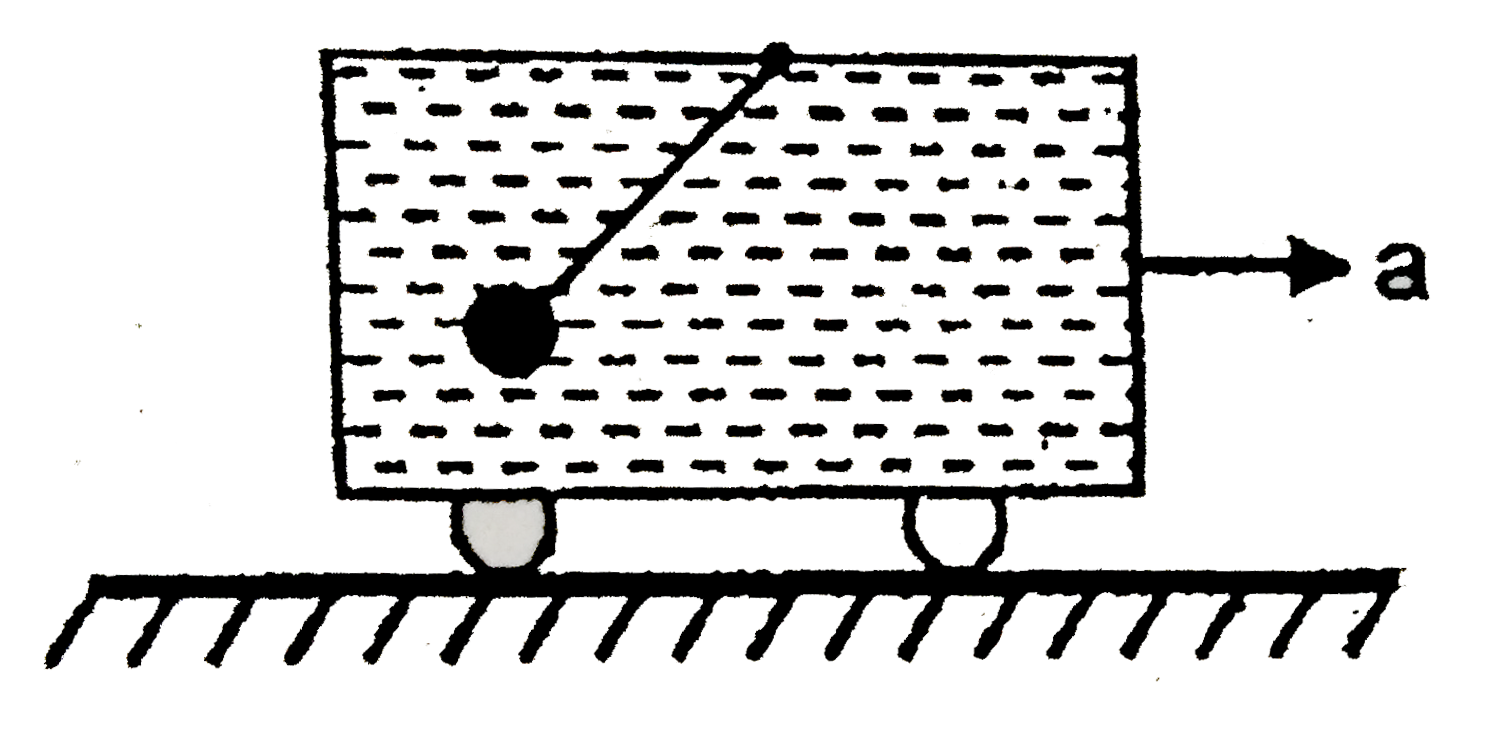For an ideal liquid :
the shear modulus is infinite.
the shear modulus is zero
the bulk modulus is zero.
the bulk modulus is infinite.
The correct Answer is:B, D
To solve the question regarding the properties of an ideal liquid, we need to analyze the characteristics of an ideal liquid in terms of its bulk modulus and shear modulus.
1. Understanding Ideal Liquid:
- An ideal liquid is one that is incompressible and has no viscosity. This means that it does not resist deformation and can flow freely.
2. Bulk Modulus:
- The bulk modulus (K) of a substance is defined as the measure of its resistance to uniform compression. It is mathematically expressed as:
K=−VdPdV
- For an ideal liquid, since it is incompressible, the change in volume (dV) is zero when pressure (P) is applied. Thus, the bulk modulus approaches infinity:
K=1Compressibility→∞(as compressibility approaches 0)
3. Shear Modulus:
- The shear modulus (G) is a measure of a material's ability to resist shear deformation. For an ideal liquid, which has no viscosity, the layers of the liquid can slide over each other without any resistance.
- Mathematically, the shear modulus can be expressed as:
G=Shear StressShear Strain
- Since there is no viscosity in an ideal liquid, even a small applied force can cause an infinite displacement (Δx) of the layers. Therefore, the shear modulus tends to zero:
G→0(as shear strain becomes infinite)
4. Conclusion:
- From the analysis, we conclude that for an ideal liquid:
- The bulk modulus is infinite.
- The shear modulus is zero.
Final Answer:
- The correct conditions for an ideal liquid are:
- Bulk modulus is infinite.
- Shear modulus is zero.
- An ideal liquid is one that is incompressible and has no viscosity. This means that it does not resist deformation and can flow freely.
- The bulk modulus (K) of a substance is defined as the measure of its resistance to uniform compression. It is mathematically expressed as:
K=−VdPdV
- For an ideal liquid, since it is incompressible, the change in volume (dV) is zero when pressure (P) is applied. Thus, the bulk modulus approaches infinity:
K=1Compressibility→∞(as compressibility approaches 0)
- The shear modulus (G) is a measure of a material's ability to resist shear deformation. For an ideal liquid, which has no viscosity, the layers of the liquid can slide over each other without any resistance.
- Mathematically, the shear modulus can be expressed as:
G=Shear StressShear Strain
- Since there is no viscosity in an ideal liquid, even a small applied force can cause an infinite displacement (Δx) of the layers. Therefore, the shear modulus tends to zero:
G→0(as shear strain becomes infinite)
- From the analysis, we conclude that for an ideal liquid:
- The bulk modulus is infinite.
- The shear modulus is zero.
- The correct conditions for an ideal liquid are:
- Bulk modulus is infinite.
- Shear modulus is zero.
Topper's Solved these Questions
- BOOK - RESNICK AND HALLIDAYCHAPTER - ELASTICITYEXERCISE - PRACTICE QUESTIONS (Linked Comprehension)6videos
ELASTICITY
- BOOK - RESNICK AND HALLIDAYCHAPTER - ELASTICITYEXERCISE - PRACTICE QUESTIONS (Matrix - Match)5videos
ELASTICITY
- BOOK - RESNICK AND HALLIDAYCHAPTER - ELASTICITYEXERCISE - PRACTICE QUESTIONS21videos
ELASTICITY
- BOOK - RESNICK AND HALLIDAYCHAPTER - CURRENT AND RESISTANCEEXERCISE - Practice Questions (Integer Type)3videos
CURRENT AND RESISTANCE
- BOOK - RESNICK AND HALLIDAYCHAPTER - ELECTRIC CHARGES AND FIELDSEXERCISE - Practice Questions (Integer Type )3videos
ELECTRIC CHARGES AND FIELDS
Similar Questions
What happeds to the pressure of an ideal liquid when it passes through a region where its speed increases?
View SolutionA cylindrical vessel of radius R=1m and height H=3m is filled with an ideal liquid up to a height of h=2 m. the contaienr with liquid is rotated about its central vertical axis such that the liquid just rises to the brim. Calculate the angular speed (ω) of the container.
View Solution
Knowledge Check
- Question 1 - Select One
The pipe shows the volume flow rate of an ideal liquid at certain time and its direction. What is the value of Q in m3/s? (Assume steady state and equal area of cross section at each opening)
 A10×10−6B11×10−6C13×10−6D18×10−6
A10×10−6B11×10−6C13×10−6D18×10−6 - Question 2 - Select One
Two volatile liquide A and B are mixed in mole ratio 1:3, to form an ideal liquid solution Vapour pressure of pure. A and B are 600 torr and 200 torr. Volume of container for vapour is 76 litre. (R=1/12 litre atm/K/mole)
Calculate the mole of A in vapour phase at 300 K, assuming negligible amount of vapour is present compared to liquid in containerA2 moleB0.3 moleC1.2 moleD0.6 mole - Question 3 - Select One or More
The velocity of efflux of an ideal liquid does not depend on
Athe area of orificeBthe density of liquidCthe area of cross-section of the vesselDthe depth of point below the free surface of the liquid
Boiling point of an ideal liquid solution containing non-volatile solute depends on:
View SolutionWhich of the following properties make mercury an ideal liquid for making thermometers?
View SolutionIn the figure, an ideal liquid flows through the tube, which is of uniform cross section. The liquid has velocities vA and vB, and pressures PA and PB at the points A and B, respectively. Then
 View Solution
View SolutionAssertion: The velocity of flow of a liquid is smaller when pressure is larger and viceversa.
Reason: According to Bernoulli's theorem, for the stream line flow of an ideal liquid, the totla energy per unit mass remains constant.View SolutionFigure shows a closed container completely filled with an ideal liquid of density ρ. In the liquid there is a spherical body of volume V and density σ attached to a string whose other end is attached to the roof of the container. The container is accelerating with an acceleration 'a' towards right. The force exerted by the liquid on the spherical body when it is in equillibrium with respect to the liquid, will be :
 View Solution
View Solution

